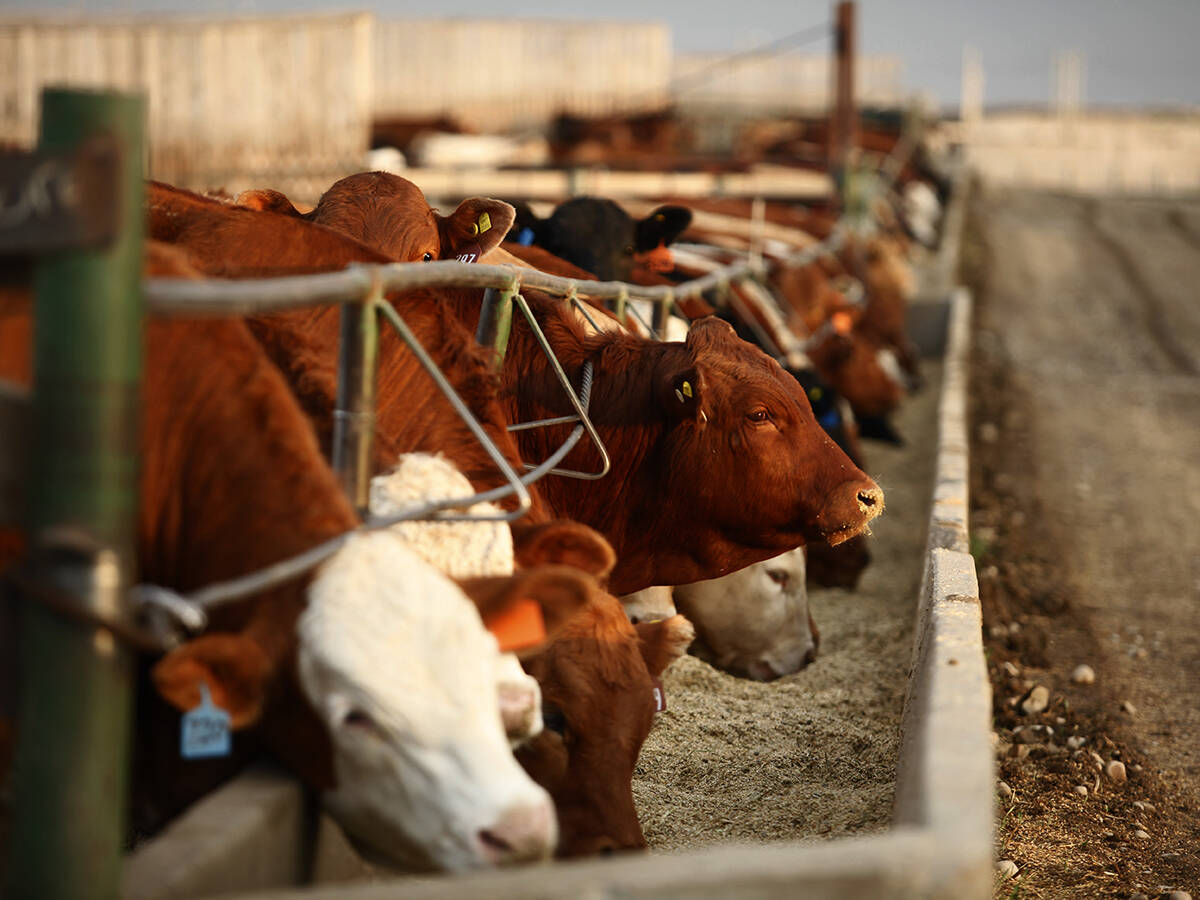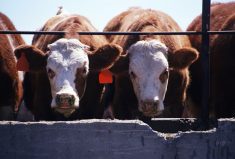Western Canada’s feeder cattle prices were quite volatile over the past week, experiencing various surges on firm momentum from seven days earlier.
In southeastern Saskatchewan and Manitoba, calves under 650 pounds were averaging $5 to $8 above week-ago levels on solid U.S. buying interest. Calves under 400 lbs. were touching the $380-$390 levels in this region. Central and northern regions of Alberta and Saskatchewan were steady to $3 on average for all weight categories.
For example, a small group of exotic steers weighing 625 lbs. sold for $318 in central Alberta. Major feedlot interest surfaced on 700-lb.-plus cattle causing market bulges of $8-$10 across the Prairies. Grassers and stockers in western and northern Alberta were firmly $5 to $8 higher.
Read Also

U.S. livestock: Cattle extend gains on improving cash prices, packer demand
Reuters — Chicago Mercantile Exchange live cattle futures set a three-week high and feeder cattle hit their highest level in…
Alberta packers were buying limited volumes of fed cattle at $190, steady with week-ago levels and approximately $6 above break-even pen closeout values.
Optimal feedlot conditions, along with the profitable margin structure for the late summer period, enhanced buying enthusiasm. The jump in live cattle futures along with steady feed grain values set the firmer tone.
U.S. beef production for March appears to be coming in lower than anticipated and there are concerns this trend will continue into April. The live cattle futures market is incorporating a risk premium due to this uncertainty in production, which is spilling over into the feeder complex in Western Canada.
Bred heifers are readily trading from $3,000 to $3,500 in southern Alberta. The expansion phase across Western Canada is now in full gear and cow-calf producers are realizing that selling bred heifers is more profitable, relative to feeding purposes.
The beef complex looks well supported over the next month due to lower production and increasing consumer demand. On the feed grain side, the focus is turning to dryer weather in U.S. southern plains. Also, Lethbridge is expected to hit 17 C next Sunday and we will see an early-seeded barley crop in southern Alberta.
Early-seeded crops are bearish for feed grains; however, limited precipitation 45 days from now will change the mindset. U.S. corn acres are expected to be down by three to four per cent and the market will be extremely sensitive to weather. Adverse weather is the next major risk to influence feeder cattle prices.
— Jerry Klassen is a commodity market analyst in Winnipeg and maintains an interest in the family feedlot in southern Alberta. He writes an in-depth biweekly commentary, Canadian Feedlot and Cattle Market Analysis, for feedlot operators in Canada. He can be reached by email at [email protected] for questions or comments.















